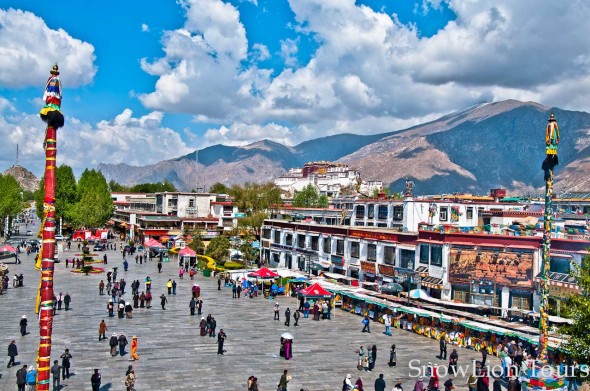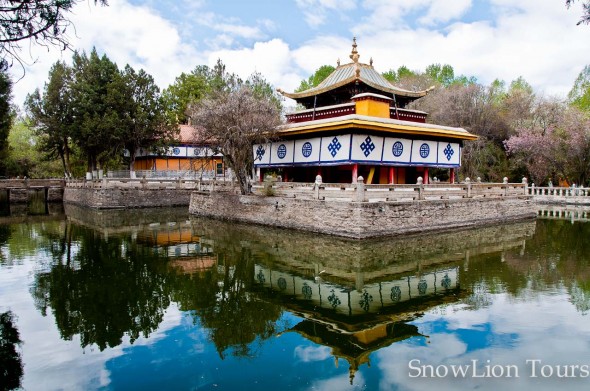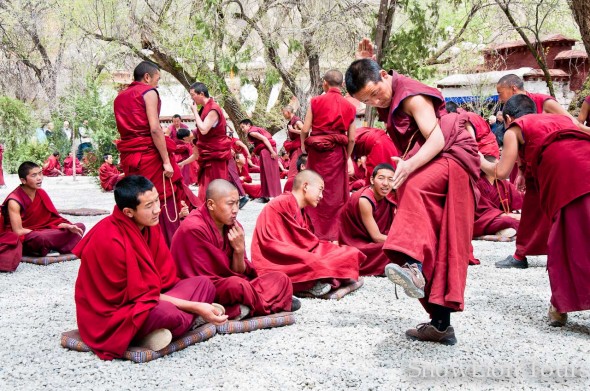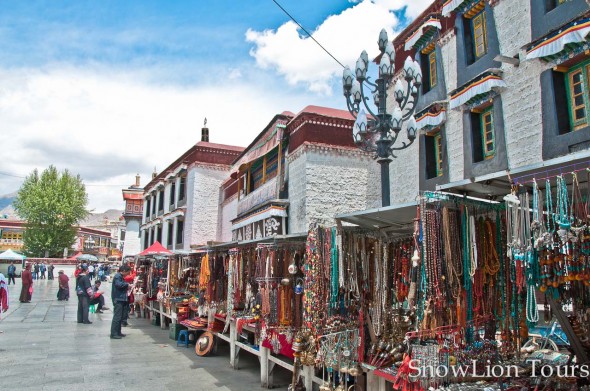The town of Lhasa, straddles the banks of the Kyichu River, where the valley opens out to its fullest extent. This is a city where the sacred temples and the profane have forged an uneasy co-existence. Lhasa, The Tibetan capital, is located in U-Tsang. This central region of Tibet with an altitude of 3650m/11975ft, is home to the Potala Palace, Mt. Everest, holy lakes, medicinal hot springs, and many of the most famous monasteries in all of Tibet. Lhasa is one of the best places to get a glimpse of modern Tibetan life, while just outside the city many farmers and nomads persist in their traditional lifestyles. While most tourists visit Lhasa in the summer, the winter is an opportune time to see the colorful Tibetan capital. During the winter, pilgrims from all over Tibet flock to Lhasa to visit holy sites and enjoy the (relatively) warmer weather.
Lhasa is best for travelers interested in touring historic Tibetan sites and buildings, visiting Mt. Everest, hiking, staying with nomads for a night, enjoying comfortable facilities, gaining an understanding of modern Tibetan life, and taking a dip in hot springs.
Lhasa has many famous tourists spot or must see sightseeings. Here I list of Lhasa highlights:
Potala Palace
This incredible architecture of Tibet is named after the Mount Potalaka, the sacred mountain abode of the Bodhisattva of Compassion. The greatest monumental structure in all of Tibet. The Potala Palace is 13 stories high and holds countless treasures in its many rooms. Built in 637 AD, the Potala has been home to the Dalai Lama lineage for more than a thousand years. The building which towers above the city of Lhasa rises from the slopes of Mount Marpori, for which reason it is known locally as the Tse Podrang (summit Palace). The outer section, known as the White Palace has functioned as the traditional seat of government and winter residence of Dalai Lamas, while the inner section known as the Red Palace contains outstanding temples and the reliquary tombs of eight past Dalai Lamas. In terms of global perception, it is this relic of Tibet’s past, present and future aspirations.
 View of Potala Palace from on the roof of Jokhang Temple
View of Potala Palace from on the roof of Jokhang Temple








